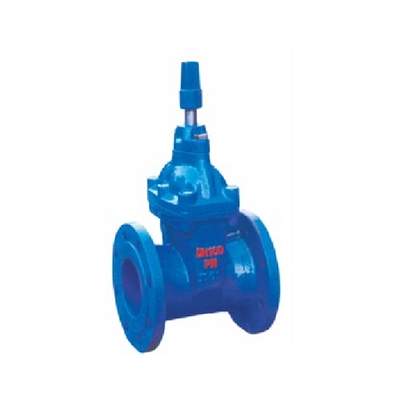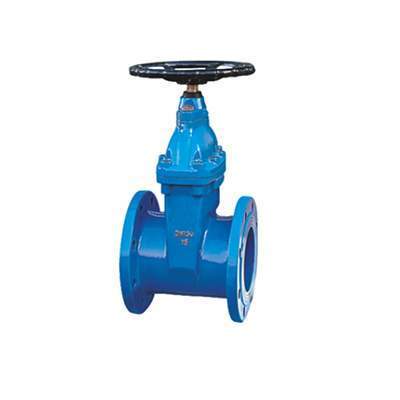Welcome to My Blog!
Before we dive into the content, I’d love for you to join me on my social media platforms where I share more insights, engage with the community, and post updates. Here’s how you can connect with me:
Facebook:https://www.facebook.com/profile.php?id=61563865935136
Now, let’s get started on our journey together. I hope you find the content here insightful, engaging, and valuable.
Introduction

In the field of fluid control systems, one of the most significant innovations in valve design is the soft seal gate valve. Designed for optimal performance in water supply, sewage treatment, industrial pipelines, and irrigation systems, the soft seal gate valve stands out due to its excellent sealing capability, long service life, and low maintenance demands.
The unique advantage of a soft seal gate valve lies in its use of resilient materials, such as EPDM or NBR rubber, which allow the gate to form a bubble-tight seal against the valve body. This enables the valve to maintain reliable shut-off and flow regulation even under low pressure and in systems with suspended particulates.
This article will explore in detail how the soft seal gate valve improves flow control, how it is constructed, and why it has become an industry standard across a broad range of applications.
Key Components of a Soft Seal Gate Valve
To understand how the soft seal gate valve performs so effectively, it’s important to first break down its core components and how each contributes to flow control.
Valve Body
The valve body is typically constructed from ductile iron or cast iron and serves as the primary pressure vessel. It is often coated with epoxy to protect against corrosion and wear.
Gate with Resilient Coating
The gate in a soft seal gate valve is entirely covered in a layer of flexible rubber such as EPDM or NBR. This rubber ensures tight sealing by conforming to any minor irregularities in the seating surface.
Stem Assembly
The stem transfers the turning motion from the handwheel or actuator to the gate. Stainless steel is commonly used for stems due to its durability and corrosion resistance.
Bonnet
The bonnet houses the upper part of the stem and forms a secondary seal. It is bolted or flanged to the valve body and is essential in maintaining structural integrity.
Seat Ring
Integrated into the body, the seat ring provides a secure area for the gate to press against. The rubber-coated gate compresses into the seat to form a seal that eliminates leakage.
Working Principle of a Soft Seal Gate Valve
The working principle of a soft seal gate valve revolves around the vertical movement of the rubber-coated gate inside the valve body. When the valve is open, the gate is fully retracted, allowing fluid to flow with minimal resistance. When closed, the gate is pushed down so that the rubber seal fully contacts the seat, stopping the flow completely.
This vertical gate movement creates a straight-through passage, which contributes to low flow resistance and minimal pressure drop. The rubber coating enhances sealing performance, even in systems with low operating pressure.
Advantages in Flow Control Performance
One of the primary reasons for the popularity of soft seal gate valves is their contribution to efficient and effective flow control. Here are several key performance advantages:
Minimal Pressure Loss
Because the gate retracts fully into the bonnet when open, there is little to no obstruction in the flow path. This results in minimal turbulence and pressure drop.
Tight Sealing Performance
The rubber encapsulation of the gate ensures that the seal between the gate and the seat is tight, even when small particles or irregularities exist.
Reduced Operating Torque
Soft seal gate valves require less torque to operate compared to metal-seated designs, making them easier to use manually or automate with smaller actuators.
Extended Valve Life
The flexible rubber absorbs impact and mechanical stress during operation, reducing wear and prolonging service life.
Bidirectional Flow Support
Soft seal gate valves can handle flow in both directions, providing greater design flexibility in piping systems.
Table: Common Technical Parameters for Soft Seal Gate Valves
| Specification | Value Range | Description |
|---|---|---|
| Nominal Diameter (DN) | 40 mm – 1200 mm | Suitable for various pipeline sizes |
| Working Pressure | PN10 / PN16 | Common pressure ratings in water and gas pipelines |
| Working Temperature | -10°C to +80°C | Safe for use in hot and cold environments |
| Sealing Material | EPDM, NBR | Offers excellent chemical and aging resistance |
| Valve Body Material | Ductile iron, cast iron | Provides strength and corrosion resistance |
| Operation Type | Manual, electric, pneumatic | Versatile for different control systems |
| Leakage Rate | Zero visible leakage | Ensures system integrity |
Applications in Different Sectors
Water Supply and Distribution
Soft seal gate valves are ideal for municipal water systems due to their leak-tight performance and corrosion resistance. Their ability to shut off flow completely helps in system isolation during maintenance.
Wastewater Treatment Plants
In sewage networks, the valves handle fluids with suspended solids. Their rubber sealing prevents clogging and ensures continuous operation.
Agricultural Irrigation
Farm irrigation systems benefit from these valves as they are easy to operate manually and can withstand exposure to organic and mineral-rich water.
Fire Protection Networks
Used in underground hydrants and fire pipelines, soft seal gate valves provide reliable isolation without leakage, crucial in emergency scenarios.
Industrial Fluids Handling
Industries dealing with non-aggressive chemicals, oils, and compressed air use these valves to maintain safe and regulated flow control.
Installation Considerations and Best Practices
Installing a soft seal gate valve requires adherence to certain best practices to maximize its efficiency and lifespan:
- Clean the pipeline before installation to remove debris.
- Ensure the valve is positioned correctly according to flow direction.
- Tighten flange bolts evenly to avoid warping the valve body.
- Use proper gaskets to enhance sealing between valve and pipeline.
- Avoid overtightening during operation to prevent damaging the rubber seal.
For buried or concealed installations, extended stem or valve boxes may be required.
Maintenance and Troubleshooting Tips
Routine maintenance can significantly extend the life of a soft seal gate valve:
- Inspect for external corrosion or leaks regularly.
- Exercise the valve (open and close) every few months.
- Lubricate the stem threads for smooth operation.
- Replace rubber seals if deformed or cracked.
Common issues such as valve not sealing properly are often caused by sediment lodged in the seat or rubber deterioration, both of which can be addressed with cleaning or seal replacement.
Why Choose Soft Seal Over Metal-Seated Gate Valves?

Soft seal gate valves offer several advantages compared to traditional metal-seated designs:
- Better sealing, especially at low pressures
- More resistant to corrosion and erosion
- Easier operation due to lower torque requirement
- Lower total cost of ownership due to reduced maintenance
They may not be suitable for extremely high temperatures or highly abrasive fluids, but for the vast majority of water-based and low-pressure systems, they are the superior choice.
Conclusion
The soft seal gate valve has redefined modern pipeline management. Its ability to provide leak-proof shutoff, resist corrosion, and reduce maintenance makes it an indispensable component in today’s fluid control systems. Its role in improving flow control is evident across water treatment, industrial, and fire protection applications.
Looking to improve your pipeline efficiency? Contact us today to find the best soft seal gate valve solutions tailored to your needs.
FAQ
What is the primary benefit of using a soft seal gate valve?
The main advantage is its excellent sealing performance, even under low-pressure conditions, which ensures zero leakage and improved flow control.
What types of fluids can soft seal gate valves handle?
They are suitable for potable water, wastewater, irrigation water, and certain non-aggressive industrial fluids.
How long do the rubber seals typically last?
With proper maintenance, EPDM or NBR seals can last between 8 to 15 years depending on usage conditions.
